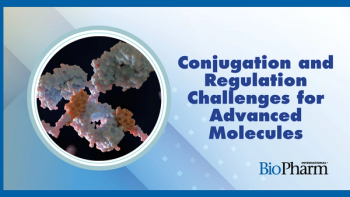
Mechanistic Hypothesis of Toxicity: Driving Decision Making in Preclinical Translation
Mechanistic toxicity hypothesis is essential in guiding decision-making and predicting toxicities during the preclinical stages of drug development. The authors highlight the growing importance of integrating advanced technologies like mass spectrometry imaging into toxicology to enhance preclinical translation, foster innovation in therapeutic development, and ultimately improve drug safety and efficacy.
In drug development, data from toxicological investigations serve as the foundation for building an understanding of drug safety and mitigating risk. The primary objective of these investigations is to uncover a mechanistic hypothesis underlying toxicity and enabling critical decision-making regarding translation and drug progression or termination. Given the significant investment leading up to this point, the implications of making the correct decision in go/no-go situations are critical to an organization’s success.
In some cases, the acceptance of a "black box" warning might be weighed against therapeutic benefits compared to halting a drug’s development if the risks prove insurmountable. Key decision-makers rely on the total body of evidence to support their position. Thus, data from histopathology, clinical chemistry, pharmacodynamics (PD), pharmacokinetics (PK), drug metabolism, and in vitro experiments are typically used to support the decision-making process.
Establishing reliable biomarkers for early detection of toxicity can be paramount for enhancing clinical safety and mitigating adverse outcomes. Emerging technologies can greatly enhance confidence in a mechanistic hypothesis of toxicity, thereby improving decision-making. Imaging technologies, particularly matrix-assisted laser desorption/ionization (MALDI) mass spectrometry (MS) Imaging, provide unique spatial biological information on drug and metabolite distribution, facilitating a deeper understanding of drug interactions within the tissue (1-5).
Tissue-specific drug dynamics through mass spectrometry imaging
Mass spectrometry imaging (MSI) stands out as a cutting-edge spatial molecular imaging technology that detects the API directly, rather than relying on surrogate markers. It is a label-free and a multiplexed tool that can identify parent drug, both known and potential drug metabolites, as well as endogenous biomarkers within the same experiment, providing crucial insights into drug tissue distribution at the target site. A typical MSI workflow—sample preparation/MSI acquisition/post MSI data integration—is shown in Figure 1. This capability is fundamental to pharmacology—focusing on desired therapeutic targets—and toxicology, which addresses unintended effects. Unlike plasma PK, tissue PK often provides a more accurate representation of drug activity at the site of action. While MSI drug ion images are typically integrated with histological features of hematoxylin and eosin (H&E) stained tissue, more selective protein target association is possible using immunohistochemistry (IHC) (6). MSI also offers precise quantification and the capability to determine the amount of drug in an entire tissue section but also in specific regions of interest within the tissue section, often based on histological features (7–9). The spatial resolution can be selected based on the type of tissue and experimental design, ranging from multicellular to cellular resolution. Advancements in sensitivity have kept pace with improvements in spatial resolution, enabling drug toxicity studies to be conducted at relevant dosing regimens.
In practice: considerations for perspective and prospective studies with MSI
Toxicological investigative studies are unique in terms of both cost and the number of scientific teams involved in the planning, execution, analysis, and dissemination of findings. These studies typically include members from the project team, safety (tox), necropsy technical staff, veterinary pathology (histopathology), drug pharmacokinetics and metabolism (DMPK), bioanalysis, and a quality assurance team member if it is a good laboratory practice (GLP) study.Therefore, incorporation of MSI into the study plan requires effective communication and integration.
When discussing potential studies with the planning team, determining the MSI limit of detection (LOD) for the parent drug or any known drug metabolites is the crucial first step. Perspective studies may be limited by drug PK relative to the time of necropsy and the availability of flash-frozen tissue. Substituting formalin-fixed tissues is unlikely to offer an appropriate alternative as samples may have experienced drug diffusion and loss. Standard protocols often perform necropsy 24 hours after the last dose, limiting drug tissue concentration, except in cases of drug or drug-related material accumulation after steady-state repeat dosing.For perspective studies already completed, a comparison of the MALDI drug LOD with plasma PK at necropsy can give some indication as to the likely success of the MSI experiment.
As noted, drug accumulation in tissue over time may not be reflected in the plasma PK timepoint but should be suggested by other DMPK experiments. Tissue homogenate liquid chromatography-MS (LC-MS) analysis can also provide some insight into the concentration of drug or drug metabolites present in the target tissue or identify accumulation of unexpected metabolites. Caution must be taken in interpreting homogenate data as the measured analyte total tissue concentration can be from a slightly heterogeneous tissue distribution or from a highly localized distribution.
Prospective studies offer the flexibility to tailor for inclusion of MSI analysis into the broader toxicology study design and starting with the LOD determination is key. If a full plasma PK analysis is necessary for the study, the PK time course should be completed followed by an additional dose used for selecting the optimal necropsy time for measurable drug concentration. An advantage of the prospective study design is that adequate target tissue(s) can be flash frozen for MSI experiments with the approval of study toxicologists and histopathologists who have priority in tissue evaluation. The ability to integrate toxicology and histopathology findings as well as other data such as clinical chemistry, DMPK, and bioanalysis with MSI spatial distribution and quantification of drug related material within the same study, provides the greatest opportunity to generate a mechanic hypothesis for observed drug related toxicity and the possibility of translation to the clinic.
For GLP studies, the project team and pathologists should consider whether a few targeted tissue blocks can be flash-frozen for MSI and transferred to a non-GLP protocol for tissue imaging. Leveraging histopathology in designing MSI experiments is essential for maximizing the benefits from all animal studies, following the 3R principles (replacement, reduction, and refinement). If there is a potential toxicity concern, flash-frozen tissue blocks for MSI can be requested. Post-necropsy and histopathology, a decision can be made; if no toxicity is found, the cost for tissue collection and disposal is minimal. However, if toxicity is confirmed, this initial step will save time and money for subsequent studies while importantly reducing animal use.
Utilizing MSI for targeted drug delivery
MSI offers significant advantages in the development of small molecule therapeutics. In a study by Cheng et al. (10), MSI was combined with in-life positron emission tomography (PET) imaging and ex vivo MALDI MSI biodistribution studies to provide a comprehensive preclinical dataset for PK/PD modeling. This multimodal approach enhances the understanding of drug distribution and efficacy, which is vital for optimizing the therapeutic strategies. The selective target delivery demonstrated by the MSI studies minimized systemic exposure and associated toxicity of the API (10).
Similarly, Xie et al.(11) used MSI to map specific lipids in skin, sebaceous gland, and hair follicles, showcasing the technology's ability to link lipid distribution with biological functions. These insights are valuable for developing lipid-based therapeutics and understanding skin-related diseases (11). Additionally, the study by Yang et al. (12) highlighted MSI's ability to distinguish biliary toxicants based on cellular distribution. By revealing distinct PKs within hepatocytes and bile duct epithelial cells, MSI informed the development of less toxic alternatives and explained differences in pathological changes between compounds (12). These examples illustrate how MSI's detailed spatial distribution data of drugs and metabolites within tissues is crucial for understanding drug efficacy, safety, and mechanisms of action, thereby advancing the development of new therapeutic modalities (13, 14).
Advancements in MSI for therapeutic applications
The field of MSI is advancing, providing enhanced sensitivity and broadening therapeutic applications. Innovations such as single-cell analysis, complex in vitro models, and improved IHC integration (MALDI-IHC) are expanding MSI’s capabilities (15–17). Growing interest in biomarkers, endogenous molecules, metabolomics, lipidomics, and glycomics further reinforces MSI’s role in investigative toxicology (18–21). With the growth in the application of spatial multi-omics for investigating the high-dimensional complexity of biological systems, MSI studies will move beyond drug-target investigations in tissues to molecular mapping of therapeutic impact on biological system and their responses to treatment (22,23). Thus, the body of evidence which guides decision making on drug safety could include MSI studies of distribution and spatial-omics. Further examples of MSI applications pushing the boundaries of research and development are described as follows:
- Oligonucleotide therapeutics. Oligonucleotide therapeutics, including small interfering ribonucleic acid (siRNA) and antisense oligonucleotides, encounter challenges related to their metabolism and potential off-target effects. Understanding these factors is essential for developing safe and effective RNA-based therapies. MALDI applications enable the rapid identification and quantification of oligonucleotide modifications and metabolites, ensuring the stability and efficacy of these therapeutics within biological systems (24–25).
- Immune therapies. Immune therapies present unique challenges in evaluating their PK and potential toxicities. The complexity of these therapies requires precise monitoring of immune-cell distribution, and the metabolites produced after administration. MSI aids researchers by mapping immune cell distribution across various tissues, offering crucial insights into their biodistribution, and potential off-target effects, thereby optimizing therapeutic strategies and improving patient outcomes (26–28).
Conclusion
MALDI MSI has emerged as a transformative tool in toxicological investigations and therapeutic development. MSI offers precise spatial molecular imaging, enabling the direct detection of APIs and their metabolites within tissues. Furthermore, multi-omics MSI studies can capture the biological molecular changes associated with therapeutic pharmacology and toxicity. This capability is crucial for understanding the underlying molecular processes of innovative therapies, including CAR T-cell therapies, oligonucleotide therapeutics, ADCs, and RNA therapeutics.
The benefits of MALDI Imaging in preclinical translation are substantial. MALDI imaging facilitates early detection of toxicity and provides detailed insights into drug-tissue interactions, which can inform critical decision-making processes and potentially reduce the need for costly follow-up studies and time delays ahead of regulatory review. Additionally, it helps identify at-risk populations and optimize dosing strategies, enhancing the overall safety and efficacy of therapeutic interventions.
MALDI imaging has the potential to drive informed decision-making and improve therapeutic outcomes justifies the investment. Careful study design and collaboration with multidisciplinary teams can maximize the benefits of MALDI Imaging, ensuring its effective integration into toxicological investigations and drug development processes.
References
1. Schulz, S.; Becker, M.; Groseclose, M. R.; Schadt, S.; Hopf, C. Advanced MALDI Mass Spectrometry Imaging in Pharmaceutical Research and Drug Development. Curr. Opin. Biotechnol. 2019, 55, 51–59.
2. Goodwin, R. J. A.; Takats, Z.; Bunch, J. A Critical and Concise Review of Mass Spectrometry Applied to Imaging in Drug Discovery. SLAS Discovery 2020, 25 (9), 963–976.
3. Spruill, M. L.; Maletic-Savatic, M.; Martin, H.; Li, F.; Liu, X. Spatial Analysis of Drug Absorption, Distribution, Metabolism, and Toxicology Using Mass Spectrometry Imaging. Biochem. Pharmacol. 2022, 201, 115080.
4. Castellino, S.; Lareau, N. M.; Groseclose, M. R. The Emergence of Imaging Mass Spectrometry in Drug Discovery and Development: Making a Difference by Driving Decision Making. J. Mass Spectrom. 2021, 56 (8), e4717.
5. Barry, J. A.; Marshall, P. S.; Groseclose, M. R. In MALDI Mass Spectrometry Imaging: From Fundamentals to Spatial Omics; Porta Siegel, T., Ed.; The Royal Society of Chemistry, 2021; Chapter 14, pp 321–358.
6. Xie, F.; Gales, T.; Ringenberg, M. A.; Wolf, A. I.; Groseclose, M. R. Characterizing the Distribution of a Stimulator of Interferon Genes Agonist and Its Metabolites in Mouse Liver by Matrix-Assisted Laser Desorption/Ionization Imaging Mass Spectrometry. Drug Metab. Dispos. 2024, 52 (11), 1181–1186.
7. Barry, J. A.; Groseclose, M. R.; Fraser, D. D.; et al. Revised Preparation of a Mimetic Tissue Model for Quantitative Imaging Mass Spectrometry. Protocol Exchange, 2018; Version 1.
8. Barry, J. A.; Groseclose, M. R.; Castellino, S. Quantification and Assessment of Detection Capability in Imaging Mass Spectrometry Using a Revised Mimetic Tissue Model. Bioanalysis 2019, 11 (11), 1099–1116.
9. Barry, J. A.; Ait-Belkacem, R.; Hardesty, W. M.; Benakli, L.; Andonian, C.; Licea-Perez, H.; Stauber, J.; Castellino, S. Multicenter Validation Study of Quantitative Imaging Mass Spectrometry. Anal. Chem. 2019, 91 (9), 6266–6274.
10. Cheng, S.-H.; Groseclose, M. R.; Mininger, C.; Bergstrom, M.; Zhang, L.; Lenhard, S. C.; Skedzielewski, T.; Kelley, Z. D.; Comroe, D.; Hong, H.; Cui, H.; Hoover, J. L.; Rittenhouse, S.; Castellino, S.; Jucker, B. M.; Alsaid, H. Multimodal Imaging Distribution Assessment of a Liposomal Antibiotic in an Infectious Disease Model. J. Control. Release 2022, 352, 199–210.
11. Xie, F.; Groseclose, M. R.; Tortorella, S.; Cruciani, G.; Castellino, S. Mapping the Lipids of Skin Sebaceous Glands and Hair Follicles by High Spatial Resolution MALDI Imaging Mass Spectrometry. Pharmaceuticals2022, 15, 411.
12. Yang, J.; Bowman, A. P.; Buck, W. R.; Kohnken, R.; Good, C. J.; Wagner, D. S. Mass Spectrometry Imaging Distinguishes Biliary Toxicants on the Basis of Cellular Distribution. Toxicol. Pathol. 2024, 0 (0).
13. Groseclose, M. R.; Laffan, S. B.; Frazier, K. S.; Hughes-Earle, A.; Castellino, S. Imaging MS in Toxicology: An Investigation of Juvenile Rat Nephrotoxicity Associated with Dabrafenib Administration. J. Am. Soc. Mass Spectrom. 2015, 26 (6), 887–898.
14. Groseclose, M. R.; Castellino, S. An Investigation into Retigabine (Ezogabine) Associated Dyspigmentation in Rat Eyes by MALDI Imaging Mass Spectrometry. Chem. Res. Toxicol. 2019, 32 (2), 294–303.
15. Pearce, S. M.; Cross, N. A.; Smith, D. P.; Clench, M. R.; Flint, L. E.; Hamm, G.; Goodwin, R.; Langridge, J. I.; Claude, E.; Cole, L.M. Multimodal Mass Spectrometry Imaging of an Osteosarcoma Multicellular Tumour Spheroid Model to Investigate Drug-Induced Response. Metabolites2024, 14 (6), 315.
16. Schmidt, S.; Geisel, A.; Enzlein, T.; et al. Label-Free Assessment of Complement-Dependent Cytotoxicity of Therapeutic Antibodies via a Whole-Cell MALDI Mass Spectrometry Bioassay. Sci. Rep. 2024, 14, 21462.
17. Yagnik, G.; Liu, Z.; Rothschild, K. J.; Lim, M. J. Highly Multiplexed Immunohistochemical MALDI-MS Imaging of Biomarkers in Tissues. J. Am. Soc. Mass Spectrom. 2021, 32 (4), 977–988.
18. Piga, I.; Magni, F.; Smith, A. The Journey Towards Clinical Adoption of MALDI-MS-Based Imaging Proteomics: From Current Challenges to Future Expectations. FEBS Lett. 2024, 598, 621–634.
19. Ma, X.; Fernández, F. M. Advances in Mass Spectrometry Imaging for Spatial Cancer Metabolomics. Mass Spectrom. Rev. 2024, 43, 235–268.
20. Jha, D.; Blennow, K.; Zetterberg, H.; Savas, J. N.; Hanrieder, J. Spatial Neurolipidomics—MALDI Mass Spectrometry Imaging of Lipids in Brain Pathologies. J. Mass Spectrom. 2024, 59 (3), e5008.
21. McDowell, C. T.; Lu, X.; Mehta, A. S.; Angel, P. M.; Drake, R. R. Applications and Continued Evolution of Glycan Imaging Mass Spectrometry. Mass Spectrom. Rev.2023, 42, 674–705.
22. Zhang, H.; Lu, K. H.; Ebbini, M. Mass Spectrometry Imaging for Spatially Resolved Multi-Omics Molecular Mapping. npj Imaging 2024, 2, 20.
23. Li, D.; Yi, J.; Han, G.; Qiao, L. MALDI-TOF Mass Spectrometry in Clinical Analysis and Research. ACS Meas. Sci. Au 2022, 2 (5), 385–404.
24. Sharin, M. D.; Floro, G. M.; Clark, K. D. Advances in Nucleic Acid Sample Preparation for Electrospray Ionization and Matrix-Assisted Laser Desorption Ionization Mass Spectrometry. Int. J. Mass Spectrom. 2023, 494, 117138.
25. van der Vloet, L.; Barbier Saint Hilaire, P.; Bouillod, C.; Isin, E. M.; Heeren, R. M. A.; Vandenbosch, M. How Can MSI Enhance Our Understanding of ASO Distribution? Drug Discovery Today 2025, 30 (1), 104275.
26. Bindi, G.; Monza, N.; Santos de Oliveira, G.; Denti, V.; Fatahian, F.; Seyed-Golestan, S.-M. J.; L’Imperio, V.; Pagni, F.; Smith, A. Sequential MALDI-HiPLEX-IHC and Untargeted Spatial Proteomics Mass Spectrometry Imaging to Detect Proteomic Alterations Associated with Tumor-Infiltrating Lymphocytes. J. Proteome Res. 2024, Article ASAP.
27. Marković, I.; Lukić, I.; Lukić, M.; Pavičić, E.; Mrđenović, S.; Kotris, A.; Dmitrović, B.; Debeljak, Ž. Differentiation of the Chronic Lymphocytic Leukemia Response to Ibrutinib and Acalabrutinib Treatment by Single-Cell MALDI-TOF MS Imaging. J. Pharm. Biomed. Anal. 2025, 255, 116664.
28. MacDonald, J. K.; Mehta, A. S.; Drake, R. R.; Angel, P. M. Molecular Analysis of the Extracellular Microenvironment: From Form to Function. FEBS Lett.2024, 598, 602–620.
About the authors
Stefan Foser is VP Global Pharma at Bruker Daltonics. Steve Castellino is Principal Scientist, Bruker Glycobiology Solutions at Bruker Daltonics.
Newsletter
Stay at the forefront of biopharmaceutical innovation—subscribe to BioPharm International for expert insights on drug development, manufacturing, compliance, and more.




